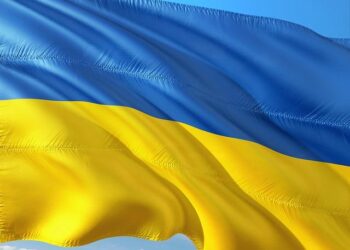Chinese exporters have been increasing the prices of war-related supplies sold to Russia, according to a recent report by the Financial Times. This shift comes amid escalating geopolitical tensions and heightened demand for military equipment in the context of the ongoing conflict involving Russia. The price hikes reflect both supply chain challenges and strategic considerations, highlighting the complex dynamics of international trade under geopolitical strain.
Chinese Exporters Increase Prices for Russian Military Contracts Amid Rising Demand
Amid escalating military demands, Chinese suppliers have strategically increased the prices of goods destined for Russian armed forces. Sources within the export sector reveal that this surge reflects both heightened demand and strained supply chains, with manufacturers optimizing profit margins as contracts grow in scale and urgency. Critical components ranging from electronic parts to raw materials are being billed at premiums, signaling a shift in Beijing’s trade dynamics with Moscow amidst international tensions.
Key factors influencing the price hike include:
- Global raw material shortages driving up production costs
- Enhanced scrutiny and logistical hurdles due to sanctions and export controls
- Increased bargaining power by Chinese manufacturers capitalizing on Russian urgency
| Supply Category | Price Increase (%) | Impact on Contract Value |
|---|---|---|
| Electronics Components | 18% | Significant |
| Metals and Alloys | 12% | Moderate |
| Logistics & Shipping | 22% | High |
| Specialized Machinery | 15% | Considerable |
Impact of Elevated Costs on Russia’s War Logistics and Procurement Strategies
In recent months, Russian military logistics have faced significant pressure as Chinese exporters have increased prices on key war supplies. This escalation in costs is straining Russia’s ability to maintain steady procurement channels, forcing logistical units to revisit their supply chain strategies. Heightened expenses have resulted in delayed deliveries and reduced quantities of essential materials ranging from electronic components to specialized hardware.
To cope with rising prices, Moscow is reportedly diversifying its sourcing approach by:
- Exploring alternative markets: Seeking vendors beyond traditional Chinese suppliers to secure more favorable terms.
- Adopting cost-saving measures: Prioritizing critical components over less essential equipment, impacting operational readiness.
- Negotiating longer contracts: Attempting to lock in prices amid volatile market conditions despite geopolitical risks.
| Supply Category | Price Increase (%) | Impact |
|---|---|---|
| Electronic Components | 15% | Delivery delays, reduced volume |
| Specialized Hardware | 20% | Budget reallocation |
| Raw Materials | 12% | Operational constraints |
Strategic Recommendations for Russian Buyers Navigating Price Hikes in Chinese Supply Chains
Russian importers face growing challenges as Chinese suppliers adjust pricing strategies sharply upward in response to geopolitical tensions and increased demand for military-related goods. To mitigate the impact of these cost surges, buyers should diversify their supply chain networks beyond traditional Chinese manufacturers. Establishing relationships with alternative Asian markets such as Vietnam, India, and South Korea can provide competitive pricing and reduce dependency on any single country. Additionally, negotiating long-term contracts with fixed pricing clauses can protect Russian firms from sudden price volatility and ensure more predictable budgeting.
Key tactics for Russian buyers include:
- Implementing joint-venture partnerships to leverage local production advantages and reduce tariffs
- Utilizing digital procurement platforms that provide real-time supplier data and price transparency
- Investing in inventory stockpiles of critical components before further price hikes occur
| Strategy | Benefit | Potential Risk |
|---|---|---|
| Supplier Diversification | Reduced dependency, improved negotiation leverage | Initial setup costs, longer lead times |
| Fixed-Price Contracts | Budget predictability, risk mitigation | Less flexibility if market prices decline |
| Stockpiling Inventory | Buffer against price spikes and shortages | Storage costs, asset lock-in |
Wrapping Up
As the conflict in Ukraine persists, the increasing costs imposed by Chinese exporters on Russia for military supplies underscore the evolving dynamics of international trade amid geopolitical tensions. This development not only reflects shifting economic calculations but also highlights the broader challenges facing Russia as it navigates sanctions and supply constraints. Observers will be watching closely to see how these price adjustments affect the conflict’s trajectory and the wider global market.
















